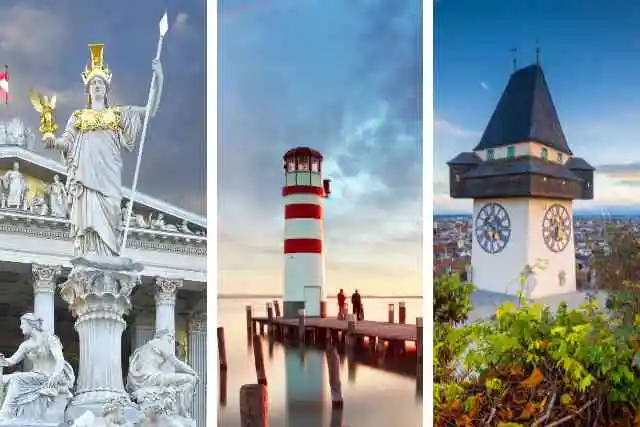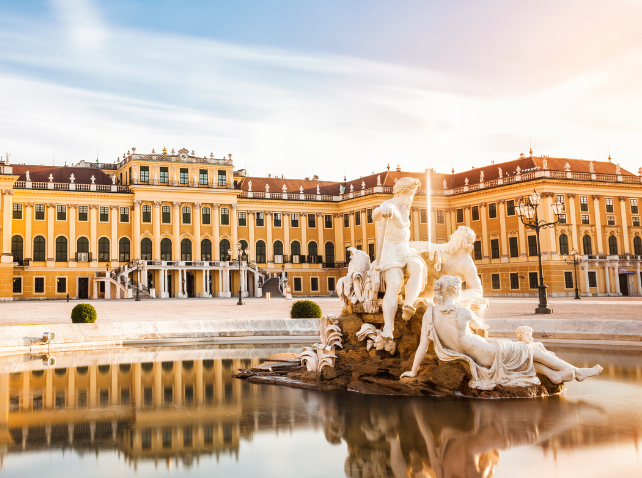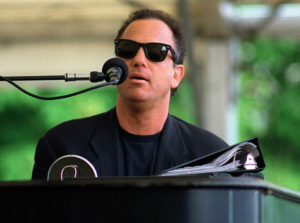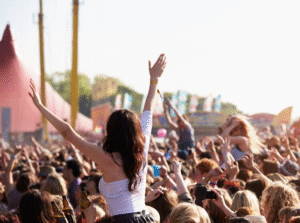This article focuses on Vienna's unique UNESCO sites and traditions, showcasing how the city’s rich history and vibrant culture continue to captivate visitors from around the world. From architectural masterpieces to cherished local customs, Vienna's heritage offers an unforgettable journey into the past and present of this remarkable city.

Book
Austria by Public Transport
Discover Austria like never before with “Austria by Public Transport.” This book is your ultimate guide to exploring the beauty of Austria easily and affordably. Get your copy today and start your adventure!
A Strong Partnership
Austria joined UNESCO (United Nations Educational, Scientific and Cultural Organization) in 1948, shortly after World War II. UNESCO, an independent part of the United Nations, works with 15 other specialized agencies and has its headquarters in Paris. Since 1948, the Austrian Commission for UNESCO (ÖUK) has acted as the connection between Austria and UNESCO. Initially, it operated within government ministries, but in 2001 it became an independent organization.
The UNESCO World Heritage List, which highlights unique places and traditions worldwide, was created in 1972. Austria joined the list in the 1990s. UNESCO aims not only to protect cultural and natural heritage but also to promote it on a global scale.
Austria’s Contributions
to UNESCO
Austria actively collaborates with UNESCO by regularly proposing new entries, particularly in the category of intangible cultural heritage. These contributions help to promote Austria’s traditions, architecture, and cultural knowledge. They also strengthen the country’s international image.
Currently, Austria has 12 cultural World Heritage Sites listed by UNESCO. Additionally, there are 168 elements from Austria included on the Intangible Cultural Heritage list. These entries showcase Austria’s rich traditions, knowledge, and craftsmanship.
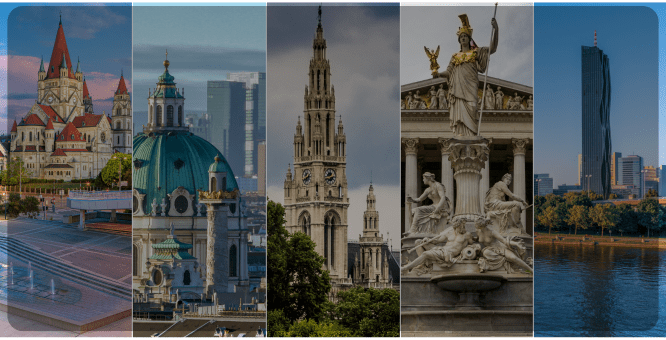
Subscribe
Explore Vienna like a local and discover nearby treasures.
Join our mailing list!
Room for
Improvement in Promotion
While Austria actively engages with UNESCO, some critics argue that the country, especially Vienna, could do more to promote its UNESCO sites. Tourists often face difficulties finding information about UNESCO and its listed places. Improving signage and creating more accessible materials could help make these sites more visible and appreciated.
UNESCO Heritage
Connected to Vienna
1. Schönbrunn Palace
and Gardens (1996)
Schönbrunn Palace and its gardens are among the top attractions in Vienna and Austria. The summer residence of the Habsburgs offered an escape from the crowded and unpleasantly smelling city during hot months. The palace has 307 rooms, with over 80 preserved in their original style. Despite damages during World War II, it now shines in its full glory.

2. Historic Centre
of Vienna (2001)
Vienna’s inner district, filled with palaces, churches, and monasteries, draws millions of visitors each year. This compact area, less than 4,000 square meters, showcases buildings from Roman times to the 19th century, when most of the city gained its current architectural charm.
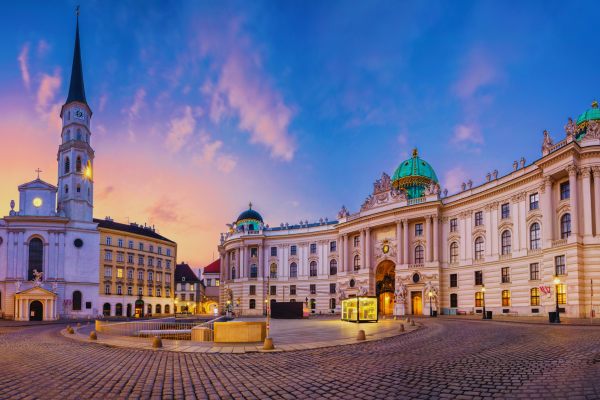
3. The Danube Limes –
Western Segment (2021)
Vienna, often associated with Roman heritage, was not a Roman city but a military camp called Vindobona. Civilian settlements developed around the camp, where soldiers traded and socialized. To experience Roman history, visit the Roman Museum in Vienna’s First District.
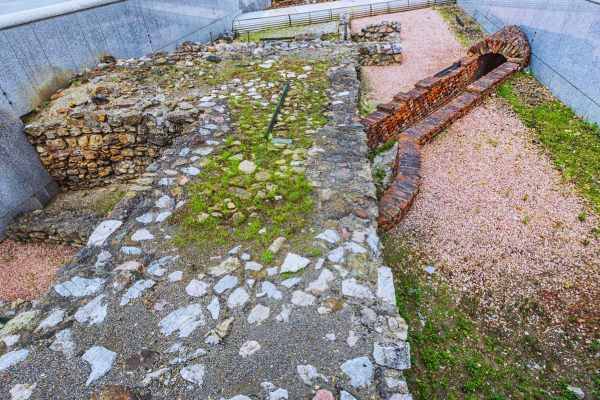
4. Wiener Würstelstandkultur
(2024)
The Wiener Würstelstand culture comes from Vienna and is connected to social events, rituals, and festivals. It is a place where people gather to enjoy a snack and have a chat. The Würstelstand is not only about eating sausages but also about socializing. Over the years, these stands have become a key part of Vienna’s city life, known for their specific atmosphere and the connection they create between different people. It all started with small stands in the 17th century, where people sold hot sausages. Today, there are around 120 stands in Vienna, and they offer a wide variety of sausages, including traditional ones like Frankfurters and Käsekrainers. The stands are also places where people share experiences and meet new people. Despite changes over time, the Würstelstand is still an important place in Vienna, especially for meeting others, and it has even spread to other countries. However, the number of these stands has decreased in recent years, so it is important to keep the tradition alive and help it continue in the future.
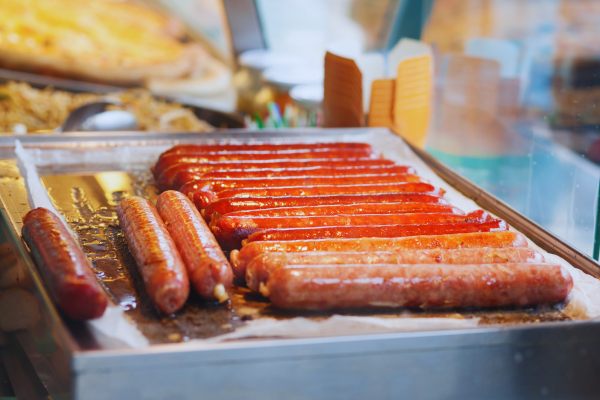
5. Viennese Coffeehouse
Culture (2011)
The Viennese coffeehouse culture is an important part of Vienna’s history and traditions. Coffeehouses are places where people gather for private and business talks, or just to relax and enjoy a coffee. Many coffeehouses in Vienna have been around for over 100 years, keeping their family-friendly atmosphere. They serve coffee on marble tables, and guests sit in comfortable Thonet chairs. The coffeehouse offers a mix of tradition and modern touches, like free Wi-Fi. Coffeehouses have a rich history, starting in the late 17th century after the Turkish siege of Vienna. The first coffeehouse opened near St. Stephen’s Cathedral, and soon others followed. Coffeehouses became places for reading newspapers, and famous musicians like Mozart visited them. In the 19th century, they became popular for social and business meetings. Women were allowed in only in 1856. Today, Vienna’s coffeehouses still offer a special place to meet, talk, and relax. They are a symbol of Vienna’s culture and continue to attract both locals and tourists.

6. Rundtanzen
am Eis in Vienna (2018)
Rundtanzen on ice is a traditional activity in Vienna where people dance in a circle to music, either in pairs or groups. Dancers adjust their steps to the rhythm of the music. The event takes place during public skating hours at ice rinks like Wiener Eislaufverein and Kunsteisbahn Engelmann. Participants, dressed in regular winter clothes and skates, join without special preparation. This tradition began in the 19th century and continues in families, with experienced dancers teaching younger generations. While the steps remain largely the same, fewer young people are learning to skate and dance. To preserve the tradition, the “Rundtanzen am Eis” club formed in 2017, offering lessons, organizing events, and sharing videos online. The club also encourages roller skaters and aims to teach children to skate and dance, ensuring that this Viennese tradition lives on.

7. Viennese Heurigen
Culture (2019)
The Wiener Heurigenkultur is a tradition from the Middle Ages, where winemakers served their own wine in simple and friendly places. Today, it is known for its cozy atmosphere, local wines like “Gemischter Satz,” and seasonal drinks like “Sturm.” The Heurigen is a relaxing spot and a place where people of all ages and backgrounds come together. However, rising property prices and problems with neighbors make it harder to keep this tradition alive. The Verein “Der Wiener Heurige” works to protect the Heurigen by setting quality rules, hosting events like the Vienna Wine Hiking Day, and improving legal support. Despite the challenges, the Heurigen remains a lively and special part of Vienna’s culture.
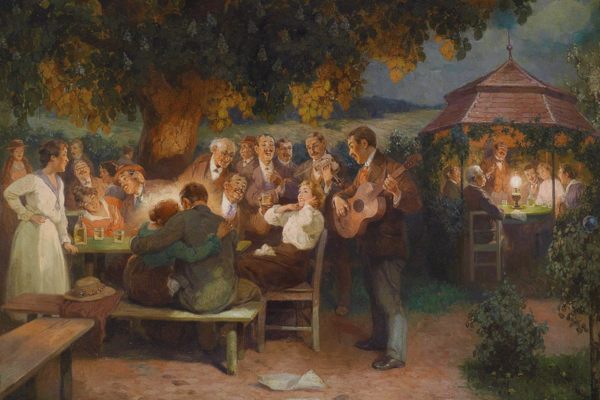
8. Hauerkrone und Hiatabaum
in Neustift am Walde (2020)
The Neustifter Kirtag is a cherished tradition in Neustift am Walde, rooted in the customs of local winegrowers. This annual festival, held since 1754 on the feast day of Saint Rochus in mid-August, celebrates the rich history of winemaking in the region. The event features a ceremonial parade, during which a winemaker is chosen to carry the crown of harvest. This person, selected from the community, symbolizes the connection between the winegrowers and their vineyards, honoring the area’s heritage. The tradition is passed down through generations, with children often taking part as “bottle boys” and “bottle girls,” later becoming crown bearers themselves. Today, the festival not only strengthens ties within the local community but also promotes the continuation of Vienna’s urban wine culture.
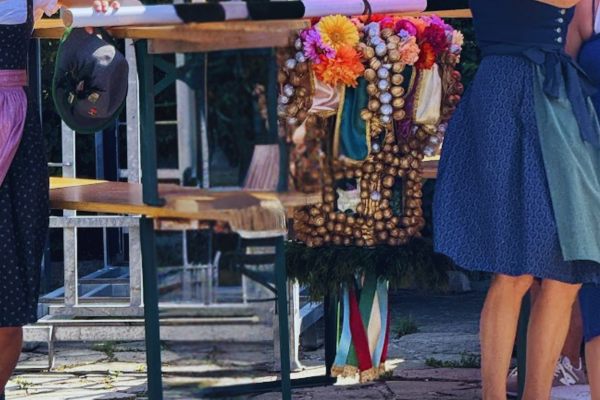
9. Jauken –
High-Flying Pigeons (2019)
The tradition of “Jauken,” a unique practice of training and flying Vienna Highflyer pigeons, has been a part of Vienna’s cultural heritage for centuries. Known as the “racehorses of the common man,” these pigeons are bred for their exceptional flying ability and evaluated in competitions based on flight height, duration, and cohesion of the flock. The art of “Jauken” is passed down orally and through practical demonstrations between generations of pigeon enthusiasts.
Originating in the 16th century, Vienna Highflyers are part of the Tumbler breed and were shaped into high-performance flyers through selective breeding. In the 19th century, the practice reached its peak, with hundreds of flocks filling the skies of Vienna. Today, the tradition continues in select communities, including Schönbrunn Zoo, where visitors can learn about this heritage and witness the pigeons in flight. However, the practice faces challenges such as urban restrictions and a decline in hobbyists. Efforts to preserve “Jauken” include public education, exhibitions, and community-driven breeding programs to sustain this rare and fascinating tradition.


Subscribe
Explore Vienna like a local and discover nearby treasures.
Join our mailing list!
10. Spanish Riding School (2015)
The Spanish Riding School in Vienna has preserved classical equestrian art for over 430 years. This tradition focuses on training Lipizzaner horses through harmony and precise communication between horse and rider. Using methods passed down for generations, riders progress from basic groundwork to advanced movements like the famous “airs above the ground,” showcasing the horse’s strength and agility.
The school emphasizes natural ability and gradual development, ensuring each horse reaches its full potential. Performances in the Winter Riding School offer a unique blend of artistry and history, making it a living symbol of Austria’s cultural heritage. Through dedication and careful teaching, this tradition continues to thrive, inspiring audiences and preserving a unique connection to Austria’s past.
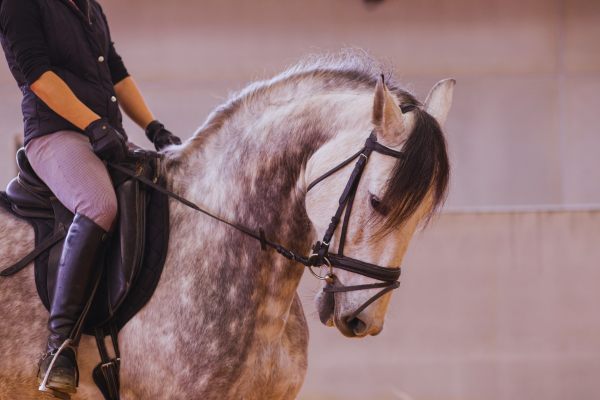
11. Stegreifspiel
at Tschauner-Bühne (2018)
The Tschauner Bühne is Vienna’s last remaining Stegreif (improvised) theater, continuing a cherished tradition of Alt-Wiener entertainment. Established in 1909 in the city’s 16th district, it began as a simple outdoor venue surrounded by orchards and vineyards. Over time, it became a beloved cultural landmark. Today, the theater combines historical charm with modern adaptations, offering over 100 performances each season, including classic improvisation plays, cabaret, and innovative shows under the banner “Stegreif 2.0.” Guided by Monika Erb, the theater thrives as a vibrant hub of Viennese folk culture, engaging audiences of all ages and keeping the art of Stegreifspiel alive for future generations.
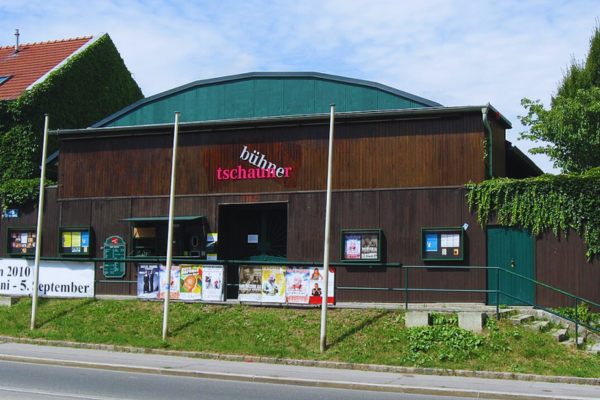
12. Vienna Boys’ Choir (2017)
The Vienna Boys’ Choir carries a legacy that dates back to 1498 when Emperor Maximilian I established it as part of the Habsburg court’s music tradition. For centuries, it has been a cornerstone of Austria’s cultural identity, with its unique sound and remarkable performances. Today, the choir includes around 100 boys aged 9 to 14, divided into four touring groups. They perform globally, showcasing a repertoire that spans from medieval hymns and classical masterpieces to traditional Viennese music and modern compositions. The boys also take part in special productions such as children’s operas and interactive concerts, blending tradition with creativity. Beyond performances, the choir values its rich rituals, such as the ceremonial handover of uniforms, symbolizing their shared heritage. By preserving this unique musical tradition, the Vienna Boys’ Choir connects past and present, bringing Austria’s cultural spirit to audiences worldwide.
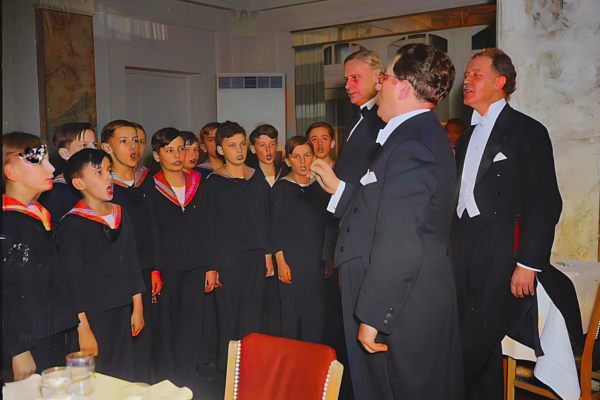
13. The Craft of
Austrian Confectionery (2022)
The art of Austrian confectionery has been passed down for generations, combining creativity, precision, and tradition. Confectioners in Austria use both traditional and modern techniques to craft sweets like Sachertorte, Linzer cake, Gugelhupf, strudel, pralines, and marzipan. Ingredients like sugar, chocolate, nuts, and spices are prepared with care, and methods such as tempering chocolate, candying fruits, and modeling marzipan reflect centuries of expertise.
This craft highlights Austria’s rich cultural history and its connection to European culinary traditions. Confectionery skills are taught through apprenticeships, ensuring that this heritage continues to thrive. It represents not only Austria’s history but also its identity, blending art and flavor into timeless creations.
Austrian confectionery has a rich tradition, with skilled pastry chefs creating treats like croissants and doughnuts. Over 1,200 confectioners continue to produce handmade delicacies, delighting both locals and tourists.

14. Dombauhüttenwesen
in Austria (2018)
Master builders in Vienna and Linz have preserved cathedral maintenance for centuries. Vienna’s St. Stephen’s Cathedral Lodge, active since the 12th century, plays a key role in this tradition. The lodge combines medieval stone-cutting techniques with modern methods to repair and maintain the iconic St. Stephen’s Cathedral. It also protects a unique collection of medieval construction plans stored in the Academy of Fine Arts. By using traditional skills like stone carving and masonry, the lodge ensures the cathedral’s beauty and history remain for future generations.
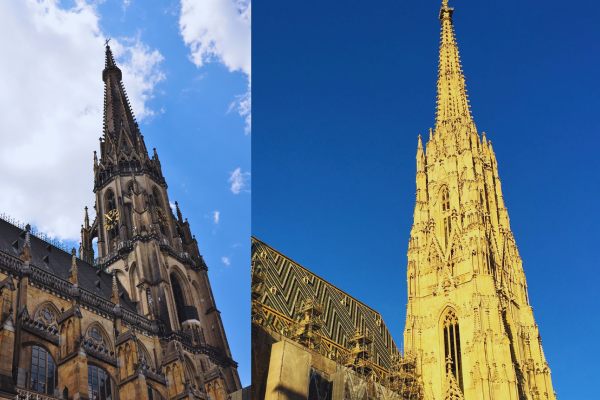
15. Krippenbrauch
in Austria (2021)
The Nativity Scene Tradition in Austria is part of UNESCO’s list of intangible cultural heritage. It is an old and important tradition that shows the story of Christ’s birth. The practice began in 1223 with Saint Francis of Assisi and has been passed down through families, churches, and communities for many generations. People create and display nativity scenes using local materials and styles, such as straw roofs in Burgenland or wooden shingles in the Alps. This tradition is not only for Christmas but also includes Lenten cribs and Holy Sepulchres. Families and groups organize workshops, exhibitions, and events like “Krippenschauen” (crib viewing). It brings people together and keeps Austria’s cultural history alive.
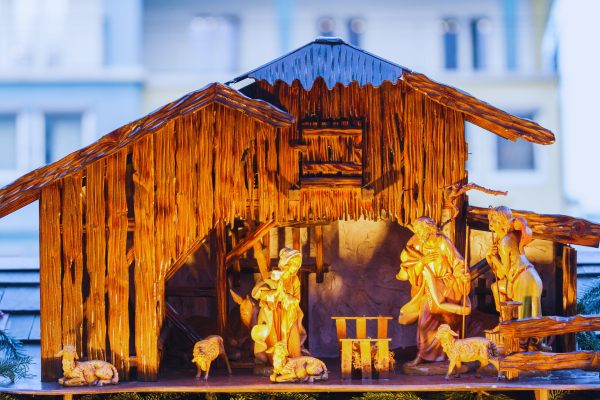
16. Goldschlägerhandwerk
in Austria (2018)
The Goldschlägerhandwerk, or gold leaf craftsmanship, was recognized as UNESCO Intangible Cultural Heritage in Austria for its historical and cultural significance. This ancient craft, practiced for over 3,000 years, involves creating ultra-thin gold leaves used to decorate temples, palaces, and precious artifacts. The tradition, which originated with the Egyptians, reached Europe in the Middle Ages and developed into a highly specialized art. Today, Austrian artisans continue to preserve this meticulous technique, producing gold leaves through over 40 precise steps. The craft’s recognition highlights its importance in sustaining cultural heritage and maintaining traditional skills.

17. Pflasterer Handwerk
in Austria (2018)
The Pflasterer Handwerk, or paving craftsmanship, was inscribed as UNESCO Intangible Cultural Heritage in Austria in 2010. This ancient trade, with roots dating back to the Roman era and even earlier, showcases traditional techniques in crafting durable and aesthetically pleasing surfaces. Paved roads have been integral to human settlements, and in Austria, discoveries such as medieval pavements in Vienna and Roman streets in Carnuntum highlight its historical significance. Today, this craft is passed down through apprenticeships, ensuring the preservation of knowledge and skills. Recognized for its sustainability, timeless beauty, and cultural importance, the Pflasterer Handwerk remains a vital part of Austria’s heritage.

18. Märchenerzählen
in Austria (2010)
The art of storytelling, or Märchenerzählen, was recognized as a UNESCO Intangible Cultural Heritage in Austria in 2010. This tradition preserves Austrian tales, legends, and values, connecting generations through oral narratives. Celebrated nationwide, the practice is kept alive in schools, cultural programs, and events such as the renowned Austrian International Storytelling Festival, which brings together storytellers from around the world to share their craft in unique locations across the country.

Austria’s UNESCO heritage reflects its deep commitment to preserving and promoting cultural traditions, historical sites, and unique crafts. Vienna stands out as a hub of rich history, vibrant traditions, and remarkable contributions to global heritage. Beyond the capital, the country’s dedication to maintaining regional customs and age-old practices highlights the diversity of Austrian culture. Exploring these treasures offers a glimpse into Austria’s past and its ongoing efforts to celebrate and share its legacy with the world.
Based on: https://www.unesco.at/
Join Our Vibrant Community
Are you passionate about discovering the hidden gems of Vienna and its surroundings? Follow us on social media and become part of our enthusiastic community!
Why Follow Us?
- Exclusive Content: Each post is a labor of love, taking between 10-30 hours to create. We share breathtaking photos, captivating stories, and invaluable tips.
- Stay Updated: Never miss out on exciting events, new attractions, and must-visit spots in and around Vienna.
- Support Independent Projects: We are an independent project, and your follows help us cover the costs of running this page. Your support is crucial!
Your Support Matters!
Every follow, like, and share directly supports our work. It helps us continue bringing you the best content and ensures we can keep this site running. By following us, you’re not just staying informed – you’re helping us grow and thrive.
Don’t miss out! Click the links above and start following us today. We can’t wait to connect with you!

